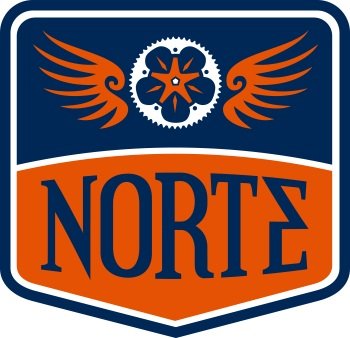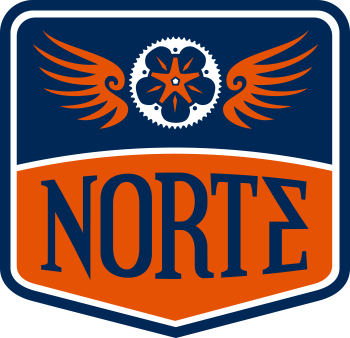What Pressure Should Bike Tires Be?
Cyclists are always talking about tire pressure, especially on rough surfaces. Finding the right bike tire pressure can help you ride faster with less effort, improve handling, and reduce the risk of a flat tire. Get a more comfortable ride by following this quick guide to tire pressure.
Measuring Bike Tire Pressure: PSI vs. BAR
On your bike tires and floor pump, you’ll likely find two different measuring units. Most US riders opt for PSI, while Europeans and Antipodeans lean toward BAR.
What is PSI?
PSI, or pounds per square inch, is commonly used in the US to measure tire pressure in bike and automobile tires. It’s exactly what the name implies; it’s a ratio of pressure in pounds for each square inch of surface area.
What is BAR?
BAR refers to the atmospheric pressure on earth at sea level. ABAR of 4 would be the barometer pressure of four atmospheres. It’s also the equivalent of 100 kilopascals, which is the metric equivalent of PSI.
Getting Your Tire Pressure Just Right
On the side of every bike tire you’ll find some of the basic dimensions of the tire, including diameter, width, and a recommended tire pressure range. The PSI range is meant to provide a safe window that maintains stability, tire contact with the rim, and a decent ride quality.
Some general ranges for bike tires include:
Kid’s Bike Tire Pressures:
· 12-inch tires: 7-20 PSI
· 16-inch tires: 20-35 PSI
· 20-inch tires: 20-40 PSI
· 24-inch tires: 20-40 PSI
Mountain Bike Tire Pressure
· 26-inch tires: 20-30 PSI
· 29-inch tires: 18-30 PSI
Gravel Bike Tire Pressure (29” or 700c wheels)
· 30-35mm tires: 25-45 PSI
· 35-40mm tires: 25-35 PSI
· 40-50mm tires: 20-30 PSI
Road Bike Tire Pressure (700c wheels)
· 19-23mm tires: 115-120 PSI
· 24-26mm tires: 100-115 PSI
· 25-28mm tires 90-110 PSI
· 30-23mm tires: 80-100 PSI
Testing Your Tire Pressure
If you’re trying to dial in your tire pressure for road, mountain biking or gravel riding, take time to experiment with your tires in the wild. Start near the upper end of the recommended range and ride a section of your favorite trail. Stop and take out about 5 PSI (you’ll need a pocket gauge) then keep riding. Repeat until you notice a decline in handling, speed, or comfort. Note that tire pressure and start there the next time you ride and put in a full effort at that specific PSI. Adjust as necessary!
What Determines the Right Tire Pressure?
There are several variables that impact the ideal tire pressure, plus the X-factor: personal preference. In addition to the variables noted below, some riders simply prefer their riders a little firmer or a little softer compared to recommended ranges or their peers. Ride what works for you!
Weight
The more you weigh, the more pressure you’ll need. Increased body weight compresses the tire, which increases the amount of tire that flattens against the ground. Note that your rear tire carries more weight than your front tire, which is why many mountain bikers ride 2-4 PSI more in the rear.
Takeaway: Heavier riders tend to ride higher tire pressures. Think 3-5 PSI or so!
Tubes vs. Tubeless
Tires with tubes need more PSI to maintain their shape, especially on impact. If you ride with tubes, ride 3-5 PSI more than you would without. For example, a mountain biker with 29” wheels and 2.25” tires with tubes might run 25 PSI with tubes and 22 PSI without.
Takeaway: Tubeless tires are more puncture resilient and let you run a lower PSI.
Air Temperature
Cold air naturally lowers internal tire pressures. If you store your bike inside and take it outside to shred, you’ll likely lose a few PSI within a few minutes. Alternatively, tires gain pressure in hot conditions, which is why tires can burst if stored in a hot car during summer days. Try to account for substantial temperature changes when airing up your bike tires, or storing your bike outside or in the garage to let temperatures equalize.
Takeaway: You don’t need a physics degree for this, but the bigger the temperature difference, the more you’ll need to adjust your pressure before you head outside.
Types of Air Valves
Finally, it’s important to know which tire valve your bike has.
Schraeder valves look like those on your car; they’re black, rubber and plastic, and have a bronze-colored threaded section. Schraeder valves are more common on kids’ bikes and less expensive mountain bikes.
Presta valves are shiny metal valves with a small threaded nut. Presta valves are lighter than Schraeder valves and are used on most bikes.
Note that these valves aren’t interchangeable and are determined by the hole cut in the rim of your wheel. If your bike (or wheel) came with one type of valve, you’ll need to stick with that style. (There are adapters to convert Schraeder valve rims to Presta, but we’re not fans.)
Go Air It Out
Getting your tire pressure dialed in makes every ride more fun. We help every child in our youth cycling programs get their tire pressure perfect, as well as gain confidence and develop healthy habits for life. Learn more about our work and consider donating to the cause today!


